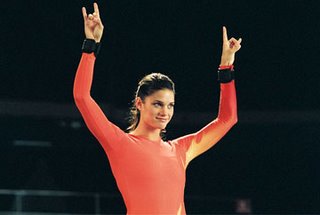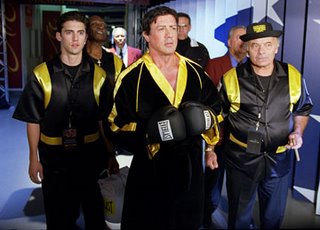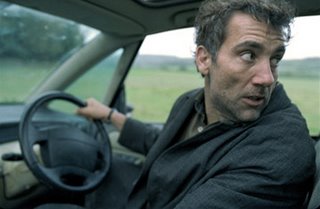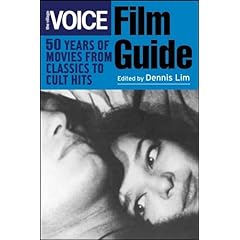2006 Top Ten: Matt Singer
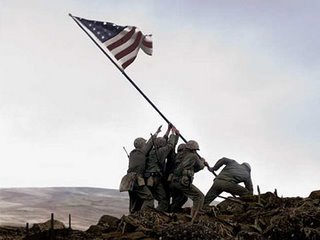
My list hasn't really changed from the one I posted at indieWIRE. Though I've seen quite a few movies in the last two weeks (Stick It!) the list remains essentially untouched:
1. L'Enfant
2. Children of Men
3. Flags of Our Fathers
4. Half Nelson
5. The Departed
6. Inside Man
7. Old Joy
8. The Queen
9. Letters From Iwo Jima
10. Art School Confidential
I'm sorta talked out about these movies — you can read my year-end essay on IFC.com or my comments on the indieWIRE poll — but I will add this: my comment on indieWIRE about ranking Art School Confidential lower than it deserved was written in jest; that is, until I got the film on DVD as a birthday present, watched it again, and realized that even though I loved it the first time around it's even better than I initially thought. Now I'd probably rank it #6, just ahead of Inside Man (which I just rewatched again last night).
(PS -- Two movies would have made my list but they didn't qualify for indieWIRE because they won't receive U.S. theatrical releases, and so I'll simply assume to include them -- or at least consider them -- in 2007: Apichatpong Weerasethakul's Syndromes and a Century and particularly Bong Joon-ho's The Host)
Speaking of Inside Man, I regret not finding a space on my indieWIRE ballot for Clive Owen's performance as bank robber extraordinaire Dalton Russell, or, for that matter, as humanity's reluctant savior in Children of Men. As Sweeney notes in his top ten, this was The Year of Clive Owen. Two great performances in two superb movies. He doesn't know it yet, but he and I are having a bit of a bromance right now.
Instead of more meaningless prattle on my top ten, how about new meaningless prattle about my second ten:
11)Tristram Shandy: A Cock and Bull Story
Come for the hilarity, stay for the excessive, borderline-dangerous hilarity during the outtakes over the closing credits. On a totally biased note, I'm a sucker for making-movie movies, especially if they play making-movies as a dopey folly. Tristram Shandy is two for two in those departments.
12)Jackass Number Two
Funnier than Borat. You're disagreeing with me, I know. But guess what — I saw both movies and you didn't.
13)Dave Chappelle's Block Party
My favorite documentary of the year. The tunes are great, but the movie is more notable for its somewhat distanced and somewhat melancholy portrait of Dave Chappelle just at the point where he had obtained everything he thought he wanted and realized it wasn't all that desirable after all. Just below the surface of everything he does in the movie is an undercurrent of depression and suspicion, with fame, and money, and power, and really the whole movie comes out of his desire to do something with his celebrity than celebrate himself.
14)Wordplay
I'm also a sucker for documentaries about obsessives (Spellbound, etc.), and they don't get much more obsessive than professional crossword puzzle designers and solvers. The character profiles are stimulating but the movie really shines at the National Crossword Tournament where the natural drama was more tense than pretty much every fiction movie of 2006. There's a moment that actually made me gasp — gasp! — out loud. And afterwards I couldn't stop doing crossword puzzles.
15) & 16)The Illusionist and The Prestige
If you'd have told me at the beginning of the year that there were going to be two movies about unsavory Victorian-era magicians and both would actually be worth your time, I'd have laughed. The Prestige had the edge in performances and plot trickery but The Illusionist's cinematography had that certain I-don't-know-what, and a really exotic, romantic air about it.
17)Volver
As Penelope Cruz said on IFC News, in an interview I saw 35 times this year: "There is only one Pedro!"
18)A Prairie Home Companion
I thought this was a very good, not great, movie when I saw it, and I still think so, even if Altman's passing has made it a particularly fitting final work.
19)Fast Food Nation
Greg Kinnear in particular elevated this ficto-eco-liberal-survey into something more: distinctly human, steeped in the drudgery of the everyday working world. I could take or leave most of the other elements of the film, but I absolutely adored Kinnear's performance as fast food marketing exec who realizes the caliber of the product he's selling. His scene with Bruce Willis is one of those Pacino-De Niro in Heat acting classes.
20)The Fountain
The movie I hated like few others, and thought and wrote and spoke about more than any other. In my mind, that's worth something.
And there you have it. I should have 1 more year-end type post totalling up exactly how many movies I've seen in 2006 (yes I count every one) and giving a month-by-month account of my favorite old movies I've seen this year.
Related awesomeness: We've reached 1 year and just about 250 posts. Plus: Termite Art is now the #1 result on google when you search for "termite art." Rock on.
Also: a Grindhouse trailer is up!! And the news that it will actually be two 90 minute features married together instead of a pair of two-reelers is an amazing gift to fans, a grand artistic experiment, and a dangerous risk from a business perspective: why would two successful filmmakers split their box office in half? I have no idea, but I'm already counting down the days to April 6th.






